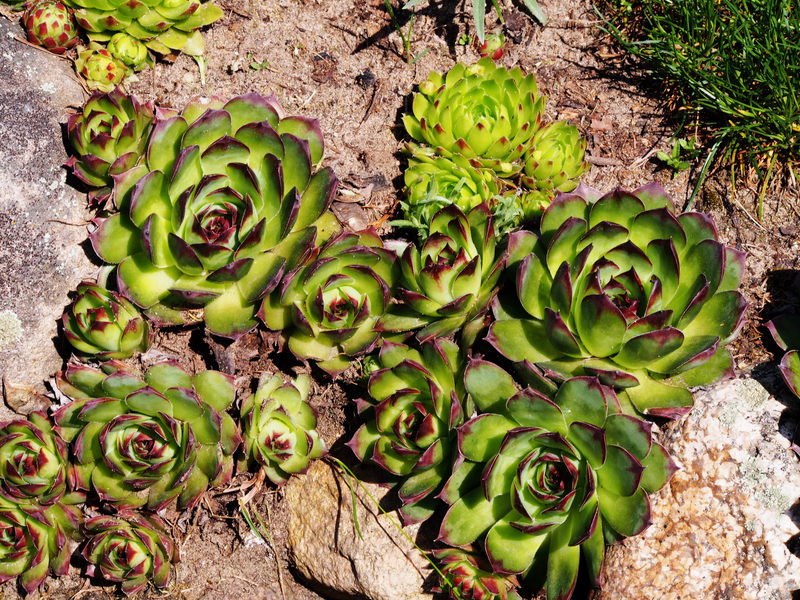From Zero to Hero: Lawn Success Tips for Garden Newbies
If you're stepping into the rewarding world of gardening and dreaming of a lush, green lawn, you're not alone. For many garden newbies, achieving lawn success can seem daunting, but with the right strategies, tips, and a bit of patience, transforming your yard from zero to hero is more attainable than you think. This comprehensive guide will walk you through everything you need to know, from choosing the right grass to ongoing lawn care, so you can establish the vibrant yard you've always desired.
Why a Gorgeous Lawn Matters
First impressions count--and nothing elevates a home's curb appeal quite like a healthy, well-kept lawn. Beyond aesthetics, a vibrant lawn offers:
- Space for recreation and relaxation
- Environmental benefits, like improved air quality and temperature regulation
- A supportive habitat for pollinators
- Increased property value
But how do you get there if you're just starting out? Let's break it down step by step.

Lawn Success Tips for Beginners: A Step-by-Step Roadmap
1. Understand Your Lawn Site
Before you even pick up a rake, get to know your garden. Observe sun and shade patterns, note areas with poor drainage, and test your soil's pH. These factors significantly influence how you'll manage your yard:
- Light Exposure: Does your lawn receive full sun, partial shade, or full shade? Choose grass types accordingly.
- Soil Quality: Invest in a soil test kit. Lawns thrive best in soil with a pH between 6.0 and 7.5. Amend as needed with lime (raises pH) or sulfur (lowers pH).
- Drainage: Watch for puddles after rainfall. Poor drainage can lead to root diseases and patchy growth.
2. Select the Right Grass Type
Lawn success hinges on choosing the grass best suited for your region and conditions. There are warm-season and cool-season grasses--each thrives under different conditions.
- Cool-season grasses (e.g., Kentucky bluegrass, perennial ryegrass, fescue): Best in northern climates, green up in spring and autumn.
- Warm-season grasses (e.g., Bermuda, Zoysia, St. Augustine): Thrive in southern climates; peak growth in summer.
- Pro Tip: Blend seed varieties for resilient, year-round coverage.
3. Prepare the Ground: Start with the Soil
Proper preparation sets a firm foundation for lawn success. Here's how:
- Clear the area: Remove weeds, debris, and rocks. Level the surface for even growth.
- Loosen the soil: Use a rototiller or garden fork to break up compacted ground.
- Amend and enrich: Blend in organic matter like compost for improved texture and nutrients.
- Level and firm: Rake the area smooth and gently tamp down, but don't compact the soil excessively.
4. Planting Your New Lawn
For garden newbies, the main lawn establishment methods are:
- Seed: The most budget-friendly option. Best in spring or fall for cool-season, late spring for warm-season varieties.
- How-to: Spread seed evenly using a broadcast spreader. Lightly rake in and water gently.
- Sod: Provides instant greenery, but costs more. Lay sod within 24 hours of delivery for best results.
- Tip: Stagger sod seams like bricks and press edges firmly together.
- Plugs or sprigs: Common for warm-season grasses; requires patience as they fill in over time.
5. The Art of Watering
One of the key tips for lawn success is proper watering--especially crucial for new lawns.
- Germination and Establishment: Keep soil consistently moist during the first few weeks. Shallow, frequent watering is best initially.
- Mature Lawn Care: Water deeply, infrequently--about 1 inch per week--preferably early morning to minimize evaporation and disease risk.
- Don't overwater! Too much water can promote shallow roots and fungal problems.
6. Essential Lawn Maintenance
Once your lawn is up and growing, ongoing care is essential to keep it lush and healthy. Here's what new gardeners need to know:
- Mowing: Start mowing when the grass reaches about 3 inches. Cut no more than one-third of the blade height at a time to prevent shock and support vigorous growth.
- Fertilizing: Use a balanced lawn fertilizer, following package instructions. Feed cool-season lawns in spring and fall, warm-season lawns in late spring and summer.
- Aeration: Aerate compacted soil annually to allow air, water, and nutrients to reach roots.
- Dethatching: Remove excessive buildup of thatch (dead grass) in spring or early fall as needed.
Hint: Keeping your mower blades sharp ensures a clean cut and less stress on the grass.
7. The Battle Against Weeds, Pests, and Diseases
Even the most diligent gardeners encounter problems. But armed with these tips for lawn success, you'll be ready:
- Prevent Weeds: Mow high (3-4 inches) to shade out weed seedlings and use pre-emergent herbicides in early spring.
- Spot-Treat Trouble Areas: Pull weeds by hand or use spot weed killers--avoid blanket treatments unless infestations are severe.
- Monitor for Pests: Grubs, chinch bugs, and other insects can damage roots and blades. Look for brown patches and consult your local nursery for solutions tailored to your region.
- Manage Lawn Diseases: Fungal issues like brown patch, dollar spot, or rust may appear as discolored areas. Reduce risk by watering early, improving airflow, and using fungicides if necessary.
Tip: Healthy, dense lawns naturally resist weeds and most pests!
8. Seasonal Lawn Care for Year-Round Success
Adapting your approach across the year makes all the difference.
- Spring: Rake away debris, overseed thin spots, and fertilize. Start mowing when growth begins.
- Summer: Water deeply, mow higher to reduce heat stress, and monitor for pest outbreaks.
- Autumn: Aerate, dethatch, and feed cool-season grasses. Rake or mulch leaves into the lawn for added organic matter.
- Winter: Minimize foot traffic on dormant grass and clear away winter debris to avoid compaction and fungal growth.
Pro tip: For busy garden newbies, set seasonal reminders in your phone or calendar to ensure consistent care.
9. Lawn Renovation: Bouncing Back From Setbacks
Sometimes, despite your best efforts, your grass may still struggle. Lawn renovation doesn't mean you've failed--it's common among new gardeners and is a normal part of the lawn care journey. Here are steps to revive a struggling lawn:
- Identify the problem: Is it compaction, pests, disease, or poor fertility?
- Address the root cause: Treat pests, improve drainage, or amend soil as required.
- Repair bare patches: Resow with quality seed, topdress with compost, and water until established.
- Be patient and persistent: Lawns take time to recover, but with consistent care, you'll see results.
Expert Tips for Lawn Success: Level Up Your Yard Game
- Mulch grass clippings: They decompose quickly, returning nutrients to the soil.
- Edge and define borders: Gives lawns a clean, professional look and prevents grass creep into flowerbeds.
- Invest in quality tools: Sharp mowers, ergonomic rakes, and reliable sprinklers make maintenance easier and more effective.
- Join a gardening community: Online forums, local clubs, and neighbors are excellent resources for troubleshooting problems and swapping tips.
Common Mistakes Garden Newbies Should Avoid
- Over-fertilizing: Can burn young grass and lead to environmental runoff. Always follow label rates.
- Ignoring pH and soil health: Healthy soil grows healthy grass--don't skip soil tests and amendments.
- Mowing too short: Also called "scalping", this weakens grass and allows weeds to invade.
- Inconsistent care: A little, regularly, is better than a lot, occasionally.

The Road to Lawn Success: Patience and Perseverance
Remember, every lawn care journey--especially for beginners--requires time, patience, and dedication. Don't get discouraged if you don't see instant perfection; turf success is about progress, not perfection. Regular watering, mowing, feeding, and problem-solving will transform your lawn from zero to hero over the seasons.
Keep notes, learn as you go, and celebrate every milestone--whether it's your first green tuft, a weed-free patch, or that perfect stripe after mowing. In time, you won't just have a healthier lawn, but a flourishing outdoor sanctuary you're proud to call your own.
Frequently Asked Questions (FAQs) for Lawn Newbies
- How often should I water my new lawn?
Answer: Water daily until seeds germinate or sod takes root. Then, transition to deep, less frequent watering (about once per week). - When is the best time to plant a lawn?
Answer: For cool-season grasses, aim for early fall or spring. Warm-season grasses establish best in late spring to early summer. - What's the easiest grass for beginners?
Answer: Fescue and ryegrass are both resilient and easier for first-timers due to their adaptability and low maintenance needs. - Can I grow grass in shady areas?
Answer: Yes, but choose shade-tolerant varieties (e.g., fine fescue) and avoid overwatering as shady spots retain moisture longer.
Start Your Lawn Success Story Today!
With these beginner-friendly strategies and tips, any starter can cultivate a thriving turf. Embrace the learning curve, adapt practices to your unique garden space, and soon you'll be the proud steward of a vibrant lawn--the envy of your neighborhood. For more lawn success tips for garden newbies, bookmark this guide and revisit it as you grow your skills and your green patch. Happy gardening!